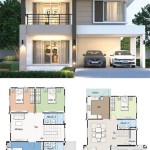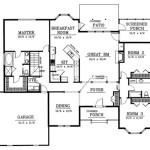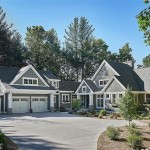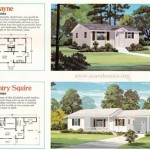Affordable Home Plans With Cost To Build
The dream of homeownership is a common aspiration, but navigating the complexities of construction costs and design choices can feel overwhelming. Identifying affordable home plans, coupled with a realistic understanding of the associated building costs, is crucial for turning that dream into a tangible reality. This article explores factors influencing the cost to build, provides resources for finding budget-friendly home plans, and offers strategies for managing construction expenses effectively.
Understanding the Factors Influencing Building Costs
Several key elements contribute to the overall cost of constructing a home. These factors vary regionally and are subject to fluctuations in the market, making accurate cost estimation a challenging yet essential aspect of project planning. Ignoring these factors can result in budget overruns and project delays.
Location: Geographic location is one of the most significant determinants of construction costs. Land prices, building material availability, labor rates, and permit fees differ considerably from one region to another. Metropolitan areas typically experience higher expenses than rural areas due to increased demand and stricter building codes.
Size and Complexity: The square footage of the house directly impacts material quantities and labor hours. Additionally, the architectural complexity of the design plays a critical role. Intricate rooflines, custom millwork, and unconventional layouts require specialized skills and increase labor costs.
Materials: The choice of materials is a significant cost driver. Opting for high-end finishes, such as granite countertops, hardwood flooring, and custom cabinetry, will substantially increase the budget compared to selecting more economical alternatives. Sourcing materials locally can sometimes reduce transportation expenses and support local businesses.
Labor Costs: Labor rates vary based on the region, the contractor's experience, and the specific trades involved. Highly skilled tradespeople, such as plumbers and electricians, generally command higher hourly rates. Obtaining multiple bids from qualified contractors is essential for comparing pricing and ensuring competitive rates.
Permits and Fees: Building permits and inspection fees are required by local governments to ensure compliance with building codes and regulations. These fees vary depending on the jurisdiction and the scope of the project. Failing to obtain the necessary permits can result in fines and project delays.
Site Preparation: The condition of the building site can significantly impact costs. Clearing vegetation, leveling the ground, and addressing soil issues can add unexpected expenses. Conducting thorough soil testing and site assessments before construction begins is crucial for identifying potential problems and planning accordingly.
Finishes and Fixtures: Interior and exterior finishes, including paint, flooring, lighting fixtures, and plumbing fixtures, contribute significantly to the overall cost. Balancing aesthetic preferences with budgetary constraints is essential when selecting these items. Exploring options such as reclaimed materials or factory-direct suppliers may offer cost savings.
Unexpected Issues: Despite careful planning, unforeseen issues can arise during construction. These might include encountering buried utilities, discovering unforeseen soil conditions, or experiencing weather-related delays. Allocating a contingency fund in the budget is essential for addressing these unpredictable expenses.
Finding Affordable Home Plans
Selecting the right home plan is a crucial step in controlling building costs. Affordability can be achieved through careful consideration of size, design complexity, and material choices. Several resources are available for finding budget-friendly home plans.
Online Plan Providers: Numerous online platforms offer a wide variety of home plans at different price points. These websites typically allow users to search for plans based on size, style, and features. Some providers offer customizable options, allowing homeowners to tailor the plans to their specific needs and budget. It is crucial to review the plans thoroughly and ensure they meet local building codes before purchase.
Architectural Firms: Hiring an architect can provide personalized design solutions that optimize space and minimize costs. Architects can work within a specified budget to create a custom home plan that meets the homeowner's needs and preferences while adhering to affordability constraints. While custom plans may be more expensive upfront, they can potentially save money in the long run by optimizing space utilization and minimizing material waste.
Stock Plans: Stock plans, also known as pre-drawn plans, are readily available and typically more affordable than custom designs. These plans have been designed by architects and are available for purchase from various online providers or architectural firms. While stock plans offer cost savings, they may require modifications to meet local building codes or accommodate specific site conditions.
Smaller Homes: Building a smaller home is one of the most effective ways to reduce construction costs. Smaller square footage translates to less material and labor, resulting in significant savings. Focusing on efficient space utilization and open floor plans can make a smaller home feel more spacious.
Simple Designs: Opting for a simple architectural design can also lower costs. Homes with rectangular footprints, gable roofs, and minimal ornamentation are typically less expensive to build than homes with complex shapes, intricate rooflines, and elaborate trim details. Simple designs often require less specialized labor and fewer custom materials.
Modular and Prefabricated Homes: Modular and prefabricated homes offer an alternative approach to traditional construction. These homes are built in factories and then assembled on the building site. Modular and prefabricated homes can often be built more quickly and at a lower cost than site-built homes, thanks to economies of scale and controlled manufacturing environments.
Strategies for Managing Construction Costs
Once a home plan is selected, implementing effective cost management strategies is essential for staying within budget. Careful planning, diligent monitoring, and proactive problem-solving can help minimize unexpected expenses and ensure the project remains financially viable.
Detailed Budgeting: Creating a comprehensive budget is a crucial first step. This budget should include all anticipated costs, such as land acquisition, permits, materials, labor, and landscaping. It is important to obtain accurate estimates from contractors and suppliers and to allocate a contingency fund for unexpected expenses. Regularly reviewing and updating the budget throughout the construction process is essential for tracking spending and identifying potential cost overruns.
Value Engineering: Value engineering involves analyzing the design and materials to identify opportunities for cost savings without compromising quality or functionality. This might involve substituting less expensive materials, simplifying the design, or optimizing construction methods. Consulting with contractors and architects about value engineering options can help reduce costs without sacrificing the desired outcome.
DIY Options: Performing some of the work oneself can save money, provided the homeowner possesses the necessary skills and time. Tasks such as painting, landscaping, and interior finishing can often be done by the homeowner. However, it is important to avoid tasks that require specialized skills or permits, such as electrical wiring or plumbing. Incorrectly performed work can lead to safety hazards and costly repairs.
Negotiating with Contractors: Obtaining multiple bids from qualified contractors is essential for ensuring competitive pricing. When reviewing bids, it is important to compare the scope of work, materials specifications, and payment schedules. Negotiating with contractors can potentially lower costs, especially if the homeowner is willing to be flexible on certain aspects of the project.
Purchasing Materials Wisely: Shopping around for materials can yield significant savings. Comparing prices from different suppliers, taking advantage of sales and discounts, and purchasing materials in bulk can help reduce material costs. Consider using reclaimed or salvaged materials for certain aspects of the project, which can be both cost-effective and environmentally friendly.
Phased Construction: Breaking the project into phases can allow homeowners to manage costs more effectively. By completing certain phases of the construction themselves or delaying non-essential elements, homeowners can spread out the expenses and potentially save money over time. This approach requires careful planning and coordination to avoid delays in subsequent phases.
Regular Monitoring: Regularly monitoring the progress of the construction and tracking expenses is crucial for identifying potential problems early on. Keeping detailed records of all invoices, receipts, and change orders can help prevent disputes and ensure accurate accounting. Communicating regularly with the contractor and addressing any concerns promptly can help prevent small issues from escalating into costly problems.
Contingency Funds: Unexpected issues are almost inevitable during construction. Allocating a contingency fund in the budget is essential for addressing these unforeseen expenses. A general rule of thumb is to allocate 5-10% of the total project cost for contingencies. Having a contingency fund provides a financial cushion and helps prevent the project from derailing due to unexpected costs.

Est House Plans To Build Simple With Style Blog Eplans Com

Affordable House Plans Our Est To Build Blog Homeplans Com
Est House Plans To Build Simple With Style Blog Eplans Com

Building On The Affordable House Plans Of 2024 Houseplans Blog Com

Building On The Affordable House Plans Of 2024 Houseplans Blog Com

Building On The Affordable House Plans Of 2024 Houseplans Blog Com

Est House Plans To Build Simple With Style Blog Eplans Com

Affordable Home Ch137 Floor Plans With Low Cost To Build
Est House Plans To Build Simple With Style Blog Eplans Com

Building On The Affordable House Plans Of 2024 Houseplans Blog Com








